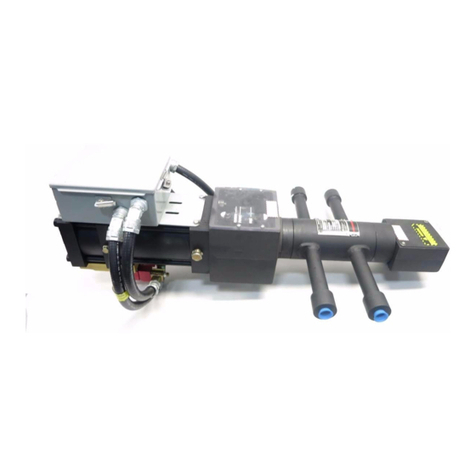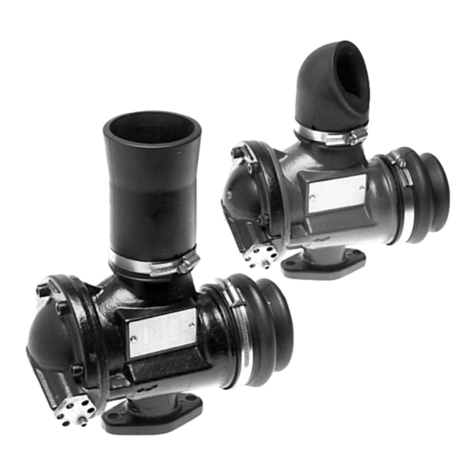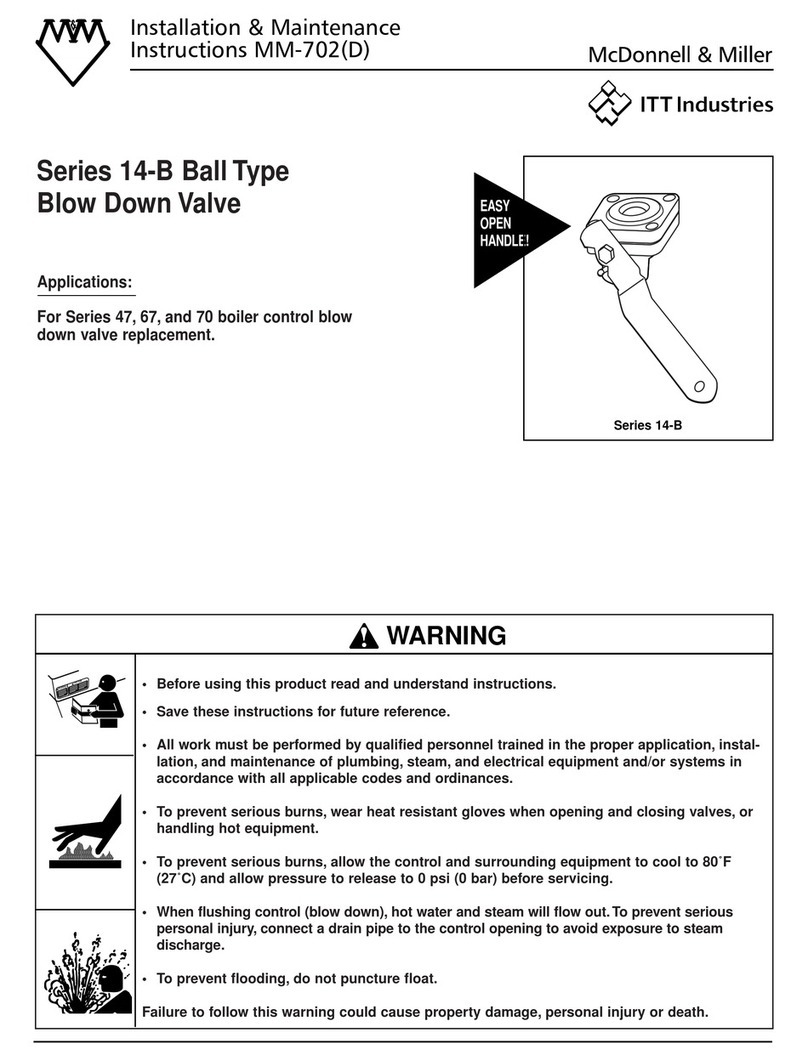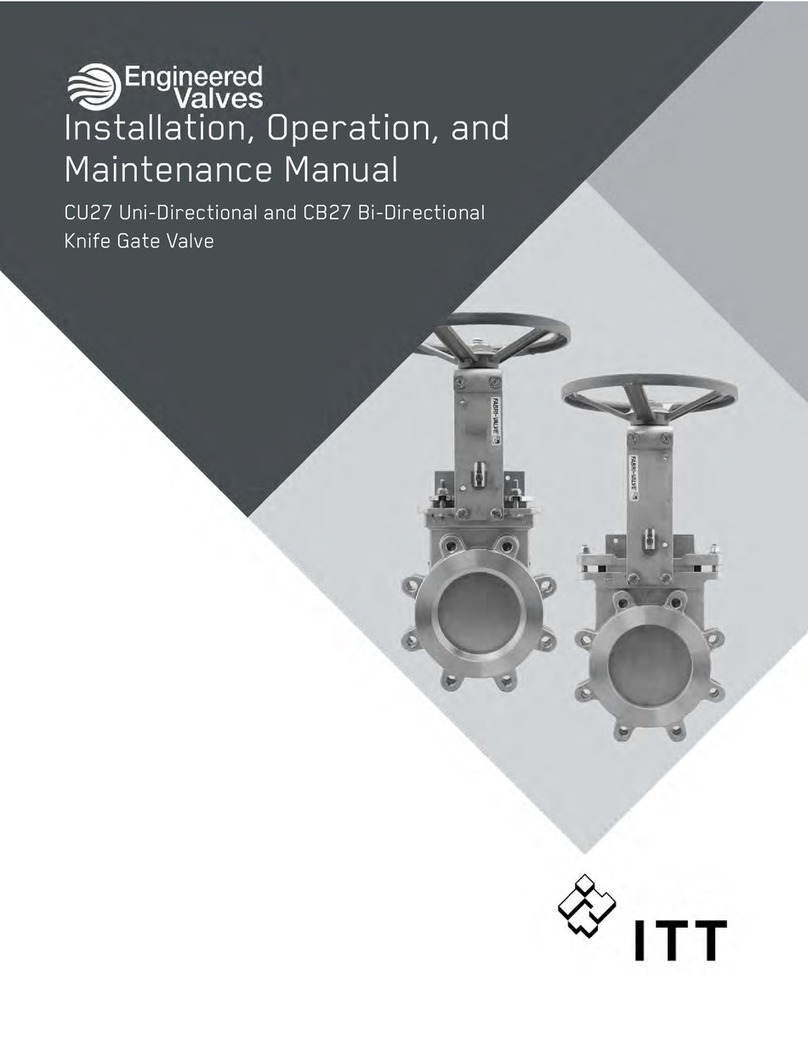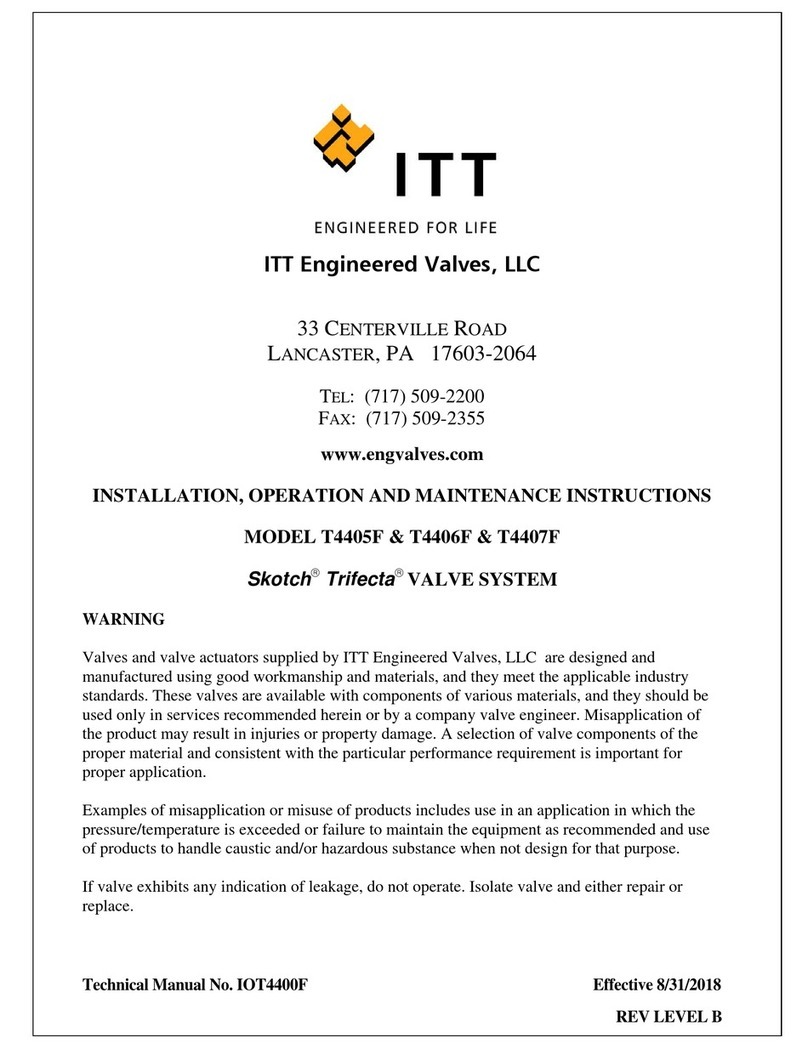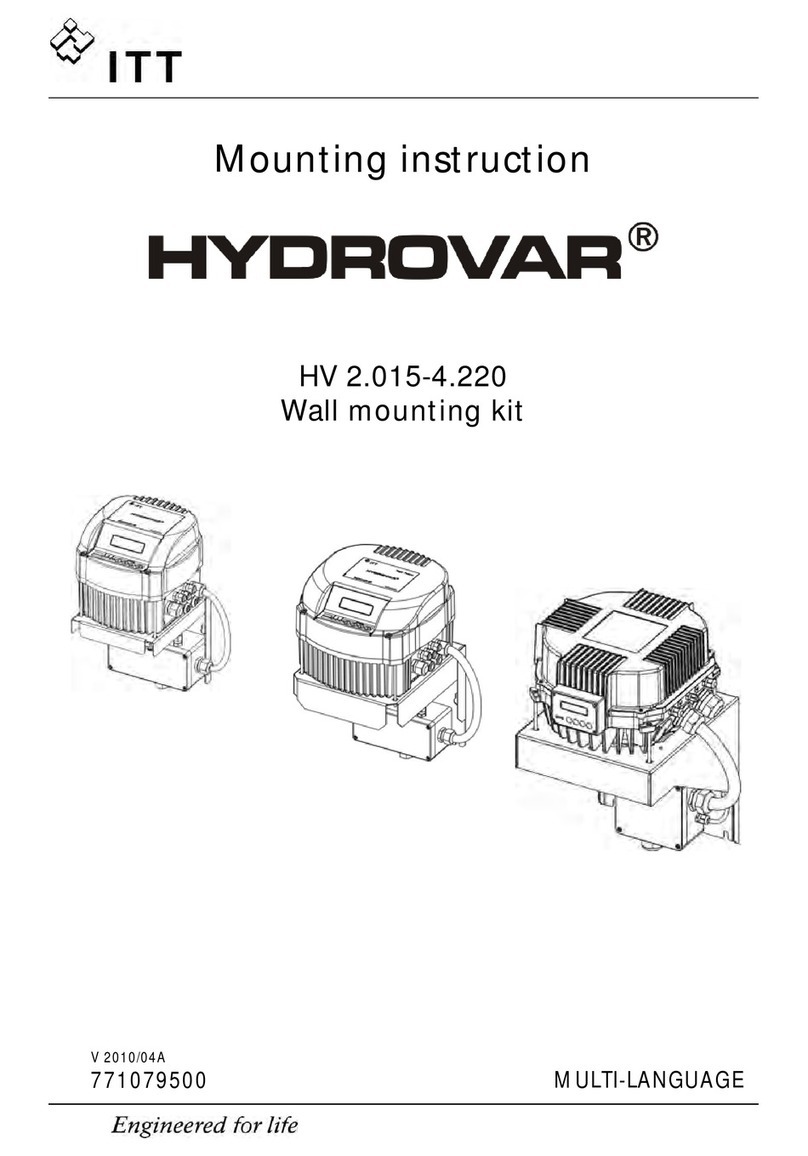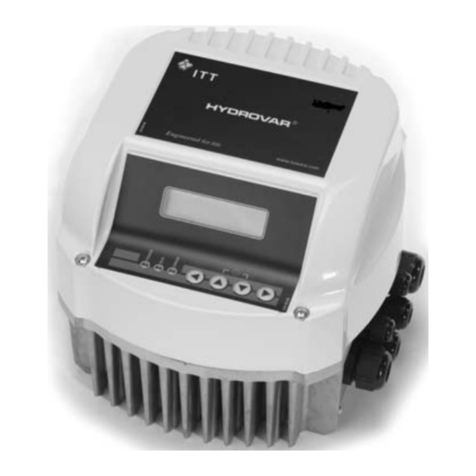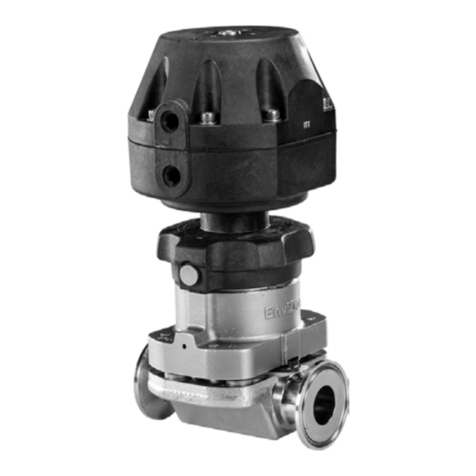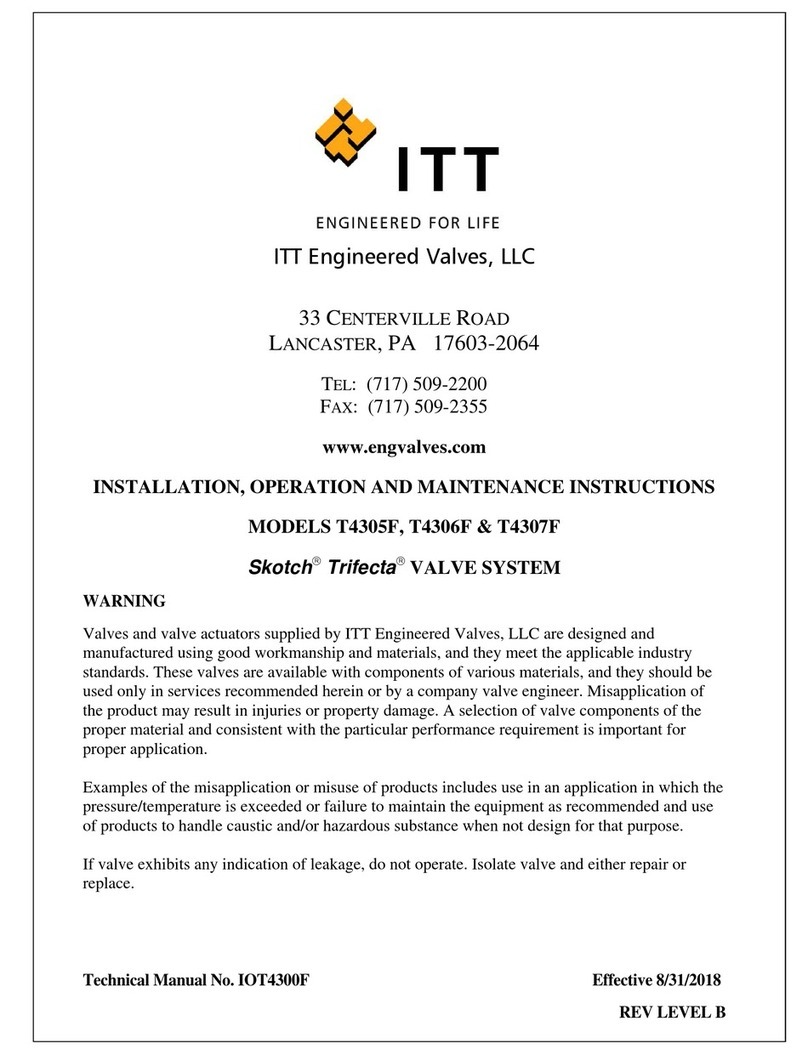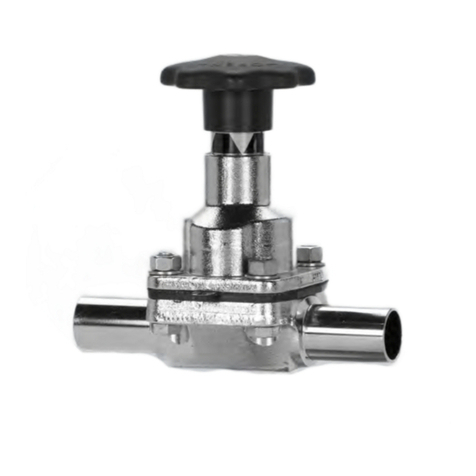
10
ITT Flygt garantiert, dass nach dem Auslaufen der Fer-
tigung dieses Produkts noch 15 Jahre lang Ersatzteile
dafür auf Lager gehalten werden.
Bedingt durch unsere Politik der fortlaufenden Weiter-
entwicklung unserer Produkte, unterliegen die in der
vorliegenden Broschüre enthaltenen Spezifikationen der
ständigen Änderung.
Als Hersteller behalten wir uns das Recht vor, die Lei-
stungs-, die Spezifikations- oder die Auslegungsdaten
ohne Vorankündigung zu ändern.
PRODUKTBESCHREIBUNG
Allgemeines
Das Spülventil dient in erster Linie dazu, Abwasser und
Schlamm aus einem Pumpensumpf herauszuspülen,
indem das Abwasser vor dem Abpumpen automatisch
gerührt wird. Zu Beginn jedes Pumpintervalls ist das
Ventil offen. Dabei wird aus der Pumpe kommendes
Wasser als Spülstrahl durch das Ventil unter Druck in
den Sumpf geleitet. Das Wasser im Sumpf wird in hefti-
ge Bewegung versetzt, und der Schlamm wird aufge-
rührt und dadurch in Suspension gebracht.
Das nach dem Ejektorprinzip arbeitende Ventil, das
eine Kugel als Verschlußelement besitzt, ist am Pum-
pengehäuse montiert. Das Ventil wird automatisch
durch die Pumpströmung und den Pumpdruck betätigt,
so dass keine Elektrokomponenten und Ver-
kabelungen erforderlich sind.
Anwendung
Mit ITT Flygt-Pumpen ausgestattete Abwasserpump-
stationen.
Für Installation an 3085–3300, an Standardpumpen
und explosionsgeschützten Pumpen in CP/DP-In-
stallationsanordnung.
Zum Anschluß des Spülventils muss das Pumpenge-
häuse vorgebohrt und mit einer angegossenen Fläche
ausgestattet sein.
Leistung
Ein Spülventil 4901 dürfte zum Spülen einer Pumpstati-
on bis 2,1 m Durchmesser ausreichen.
Medientemperatur
Maximal 40°C.
Mindesttemperatur siehe Gefrierpunkt des in der Ventil-
ölkammer verwendeten Öls.
Spülzeit
Für das Spülventil 4901 wird eine Spülzeit von 20 Se-
kunden empfohlen (mit Regulierventil einstellbar). Das
Spülventil ist offen, wenn die Pumpe anläuft, und
schließt sich nach der gewählten Rührdauer. Die Pumpe
fördert solange weiter, bis der Abschaltpegel erreicht
ist. Das Spülventil öffnet sich wieder beim Abschaltpe-
gel.
Spülventil, komplette Einheit, Standardversion
(556 51 01)
Schwarz lackiertes Ventilgehäuse.
Verschlußelement
Kugel aus Grauguss.
Spülventil, komplette Einheit, Spezialversion
(556 51 02)
Blau lackiertes Ventilgehäuse.
Verschlußelement
Kugel aus Polyuretan (für den begrenzten Einsatz mit
3085 und 3102).
Gewicht
Spülventil (Standardversion) 8,0 kg
Spülventil (Spezialversion) 7,4 kg
Begrenzungen
Da die Funktion des Spülventils vom Pumpdruck und
von der Pumpströmung abhängig ist, kann sie im
Grenzfall durch Berechnung* vorausgesagt werden. In
der nachstehenden Tabelle sind die unteren Grenzen für
die Begrenzungsberechnung angegeben.
